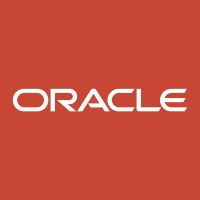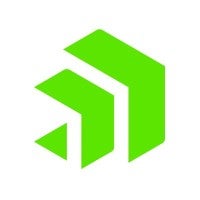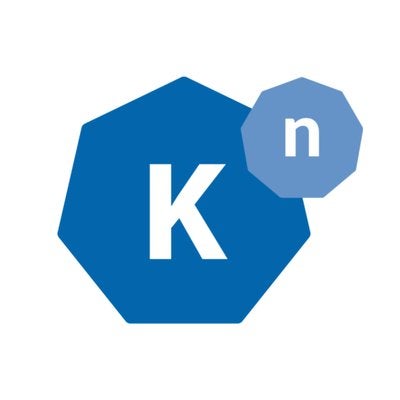Serverless computing offers an alternative to traditional compute methods and infracture, which frees up time for IT personnel to dedicate to more important tasks. As such, serverless computing is becoming more popular in industry and market trends.
An O’Reilly survey found that 40% of respondents worked at a company that had adopted serverless architecture. And a Datadog survey discovered that 50% of AWS users were using the serverless function.
From $1.9 billion in 2016, the serverless market has grown in market popularity and is estimated to be worth $7.7 billion as of the end of 2021.
What Is Serverless Computing?
Serverless computing indicates a way to build and run applications and services without the need to manage the underlying server infrastructure, according to Naina Singh, principal product manager at Red Hat. While servers are involved, they are dealt with by a cloud provider. A serverless architecture, therefore, involves allocating compute resources to satisfy user demands.
This frees up IT for other duties, and developers can work with coding without having to be concerned with time-consuming duties, such as maintaining equipment; configuration; capacity planning; fault tolerance; or the management and scaling of containers, physical servers, and virtual machines.
“The serverless name comes from the fact that the tasks associated with servers, such as provisioning, scaling, and management of the infrastructure that is required to run the application, is offloaded from the end users, making the servers invisible,” said Singh.
Benefits of Going Serverless
The benefits of a serverless architecture include:
- Ease of Deployment: Instead of weeks to select, procure, and deploy physical servers, serverless computing can be ready in hours. This raises productivity, as time is spent primarily on coding, development, and other duties rather than internal infrastructure.
- Cost: As it is a pay-per-use model, it is often less expensive to rent serverless than to maintain a fixed quantity of servers.
- Scalability: Cloud providers enable storage and compute as well as other physical resources to be added or subtracted at will as a business scales.
- Process Independence: Serverless environments are a good way to isolate parts of an application due to its use of an event-based system. Problems, therefore, are contained within a finite area.
Top Serverless Providers
Red Hat

Red Hat provides serverless capabilities through Red Hat OpenShift Serverless, which is offered as part of an OpenShift subscription. It provides one-click installation on OpenShift via an Operator.
Apart from the command-line interface (CLI) experience, it provides the serverless develop-and-deploy experience through the DevConsole of OpenShift.
Key Differentiators
- Containers are made easy with a simplified developer experience to deploy applications and code on serverless containers, abstracting infrastructure and focusing on what matters.
- Immutable revisions: Deploy new features: performing canary, A/B, or blue-green testing with gradual traffic rollout without difficulty and while following best practices.
- There is no need to configure the number of replicas or idling. With built-in reliability and fault-tolerance, users can automatically scale to zero when not in use or scale to thousands during peak.
- OpenShift Serverless can be deployed on-premises and in public or hybrid cloud environments, allowing users to leverage data locality and SaaS when needed.
- Use any programming language or runtime of choice, such as Java, Python, Go, JavaScript, Quarkus, SpringBoot or Node.js.
- Build loosely coupled and distributed apps connecting with a variety of built-in or third-party event sources or connectors powered by Operators.
- OpenShift Serverless is offered for on-premises installations of the OpenShift Kubernetes platform or in a hybrid context in combination with hosted OpenShift installations.
- As a Knative distribution, it shares benefits such as container-based packaging format, scale-to-zero, sophisticated autoscaling mechanism based on HTTP consumption, production-grade support for event-driven serverless applications backed by Apache Kafka, and support for a function programming model.
Cloudflare Workers

Cloudflare Workers is a platform to deploy code instantly for edge and performance computing. It enables IT to deploy serverless code across the globe that has performance, reliability, and scale.
Key Differentiators
- Cloudflare promises that it needs less than five minutes from signup to globally deployment.
- The code runs within milliseconds.
- There is no need to configure auto-scaling and load balancers or to pay for unused capacity.
- Traffic is automatically routed and load balanced across thousands of servers.
- Code is powered by Cloudflare’s network.
- Programming languages are available in JavaScript, Rust, C, and C++.
AWS Lambda

AWS Lambda is a serverless, event-driven compute service that lets you run code for virtually any type of application or back-end service without provisioning or managing servers. You can trigger Lambda from over 200 AWS services and SaaS applications, while only paying for what you use.
Key Differentiators
- Use Amazon Simple Storage Service (Amazon S3) to trigger AWS Lambda data processing in real time after an upload, or connect to an existing Amazon EFS file system to enable massively parallel shared access for large-scale file processing.
- AWS Lambda processes data at scale.
- Code is executed at the capacity the user needs.
- AWS Lambda scales to match data volumes automatically.
- Event triggers can be customized to users’ preferences.
- Users can run interactive web and mobile back ends.
Oracle Cloud Functions

Oracle Cloud Functions is a serverless platform that lets developers create, run, and scale applications without managing any infrastructure. In addition, Oracle Cloud Functions integrates with Oracle Cloud Infrastructure, platform services, and SaaS applications.
And because Oracle Cloud Functions is based on the open-source Fn Project, developers can create applications that can be ported to other cloud and on-premises environments.
Key Differentiators
- Code based on Oracle Cloud Functions typically runs for short durations, and users pay for only the resources they use.
- Users can write and deploy their own code.
- Oracle will automatically provision and scale resources.
- Oracle Cloud Functions automatically packages code as Docker images.
- Advanced developers can use Dockerfiles, install native libraries, and customize the function runtime environment.
- With support for Python, Go, Java, Node, and other languages, developers can choose the most appropriate language for each task and easily integrate their serverless applications.
- Users can use the managed service or self-managed, open source-based Fn clusters deployed on-premises or on any cloud.
Back4App

Back4App, built on the Parse open-source platform, offers a low-code back end to build applications. It can be used to store and query relational data in the cloud and make it accessible over GraphQL and REST.
Key Differentiators
- Back4App is easy to integrate on mobile and web apps.
- Users can store and query relational data through GraphQL, REST, or Parse SDKs.
- Business logic can be added using cloud functions.
- Apps can be made faster without managing infrastructure.
- Users can build relational data models in minutes.
- Users can perform complex relational queries in a truly serverless platform.
Kinvey

Progress Kinvey is a serverless application development platform that provides developers tools to build multichannel applications utilizing a cloud back end and front-end SDKs. It provides solutions to development needs such as a data store, data integration, single sign-on integration, and file storage.
Key Differentiators
- Developers can focus on building what provides value for their app—the user experience (UX) and business logic of the application.
- Apps built in Kinvey are made up of several decoupled parts that work together.
- The client application is the front-end, user-facing part of a Kinvey app.
- The client SDK is the interface between the client and the Kinvey service back end.
- The back-end app contains all APIs and services—data, auth, server-side logic, etc. available for a front-end client app.
- Each back-end app can have one or more environments to support the development lifecycle.
Microsoft Azure Functions

Microsoft Azure Functions offers a complete serverless application development experience. From building and debugging locally to deploying and monitoring in the cloud, Microsoft Azure Functions extensions on Visual Studio and Visual Studio Code can be used for a faster and more efficient development on a local machine.
Key Differentiators
- Microsoft Azure Functions can be fully integrated with the whole Azure platform.
- Users can set up continuous integration and continuous delivery (CI/CD) with Azure Pipelines.
- Users can get intelligent and proactive insights about the performance of serverless applications in production from Azure Monitor.
- Users can build, debug, deploy, and monitor with integrated tools and built-in DevOps capabilities.
Google Cloud Functions

Google Cloud Functions enables users to run code in the cloud with no servers or containers to manage. Google Cloud Functions is a scalable, pay-as-you-go functions-as-a-service (FaaS) product designed to build and connect event-driven services with single-purpose code.
Key Differentiators
- Build and deploy a Google Cloud Function with only a web browser using a Quickstart guide.
- Serve users from zero to large-scale.
- Google Cloud Function offers a simplified developer experience and increased developer velocity.
- Write code and let Google Cloud Function handle the operational infrastructure.
- Write and run small code snippets that respond to events.
- Streamline challenging orchestration problems by connecting Google Cloud products to one another or third-party services using events.
IBM Cloud Functions

IBM Cloud Functions is a FaaS platform based on Apache OpenWhisk. It enables developers to run application code without servers, scale it automatically, and pay nothing when it’s not in use.
Key Differentiators
- Namespaces can be explicitly managed and show up on the dashboard.
- Pay for what time you use down to one-tenth of a second.
- Run actions thousands of times in a fraction of a second, or once a week. Action instances scale to meet demand exactly, then disappear.
- Allow mobile developers to access server-side logic and to outsource compute-intensive tasks to a scalable cloud platform.
- Implement functions in languages like Swift, and consume server-side functions using the iOS SDK
Knative

The Knative open-source framework is used by many other serverless environments. For example, Red Hat OpenShift Serverless is built on top of Knative and runs on Red Hat OpenShift, Red Hat’s enterprise distribution of Kubernetes.
Knative, then, is an open-source incubating CNCF project that offers a container-based serverless solution on top of Kubernetes.
Key Differentiators
- Knative provides free usage as an open-source platform.
- There is no vendor lock-in.
- It is a platform-agnostic solution for running serverless deployments.
- Users have the ability to scale down to zero and up from zero.
- Choose your rollout strategy depending on your needs.
- Handle events from many sources.
- Run serverless containers in Kubernetes with ease. Knative takes care of the details of networking, autoscaling (even to zero), and revision tracking.
Parse

Parse is an open-source platform often used as the foundation for other serverless offerings. It is used to build applications faster with object and file storage, user authentication, push notifications, and dashboards. In addition, Parse Server is an open-source back end that can be deployed to any infrastructure that can run Node.js.
Key Differentiators
- Parse Server uses MongoDB or PostgreSQL as a database.
- Deploy and run Parse Server on your own infrastructure.
- Develop and test your app locally using Node.
- The platform is easy to run using MongoDB and Parse Server locally.

